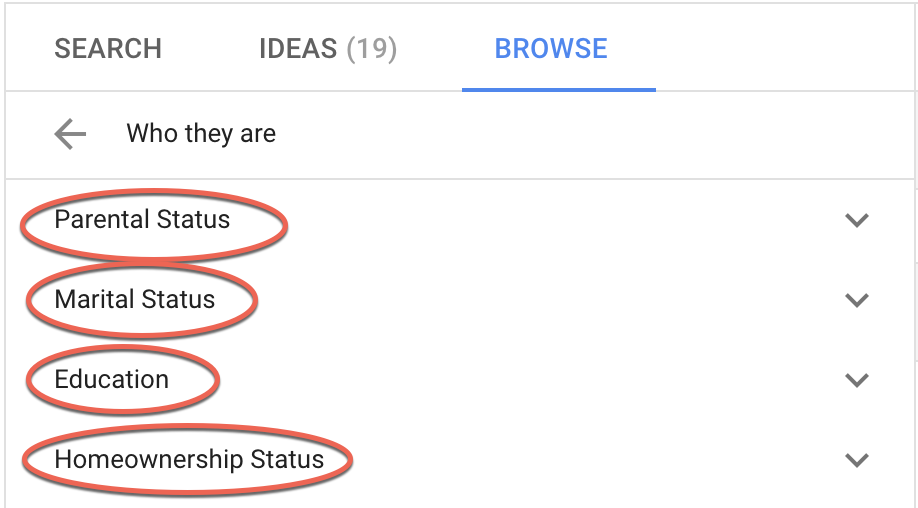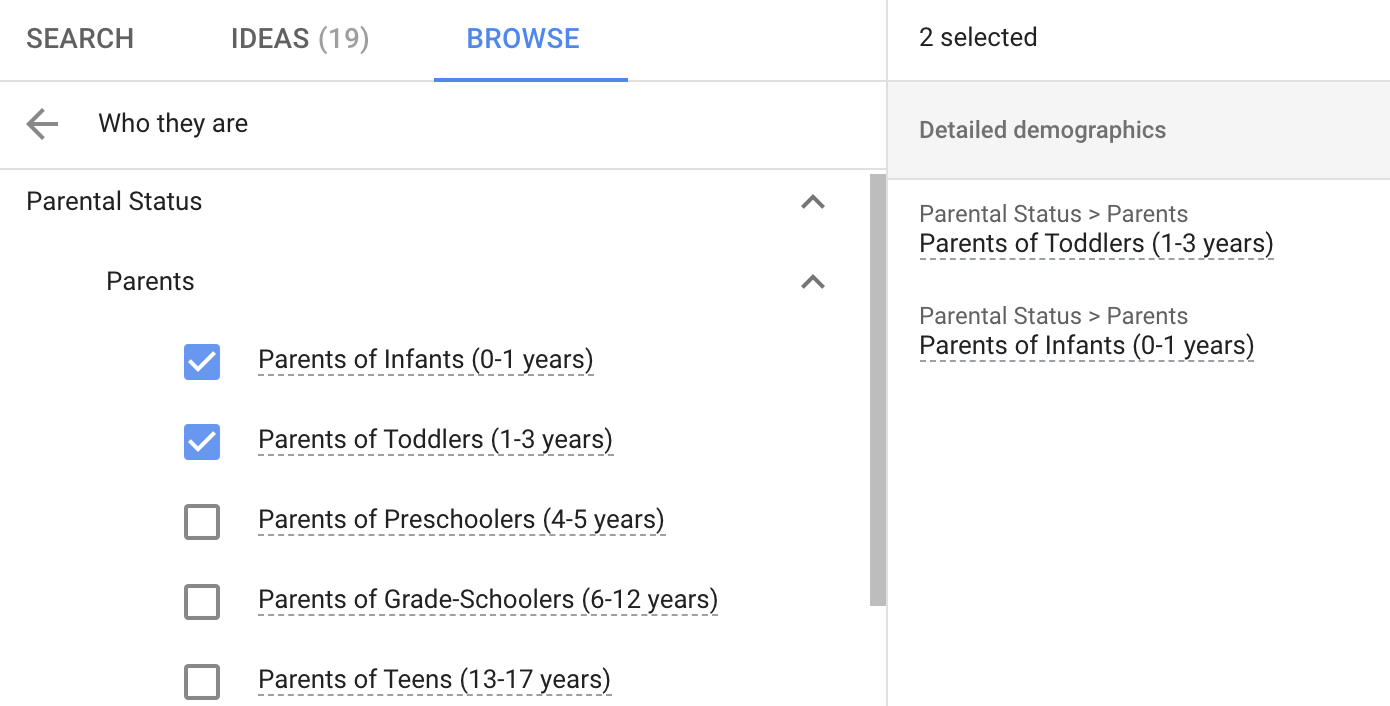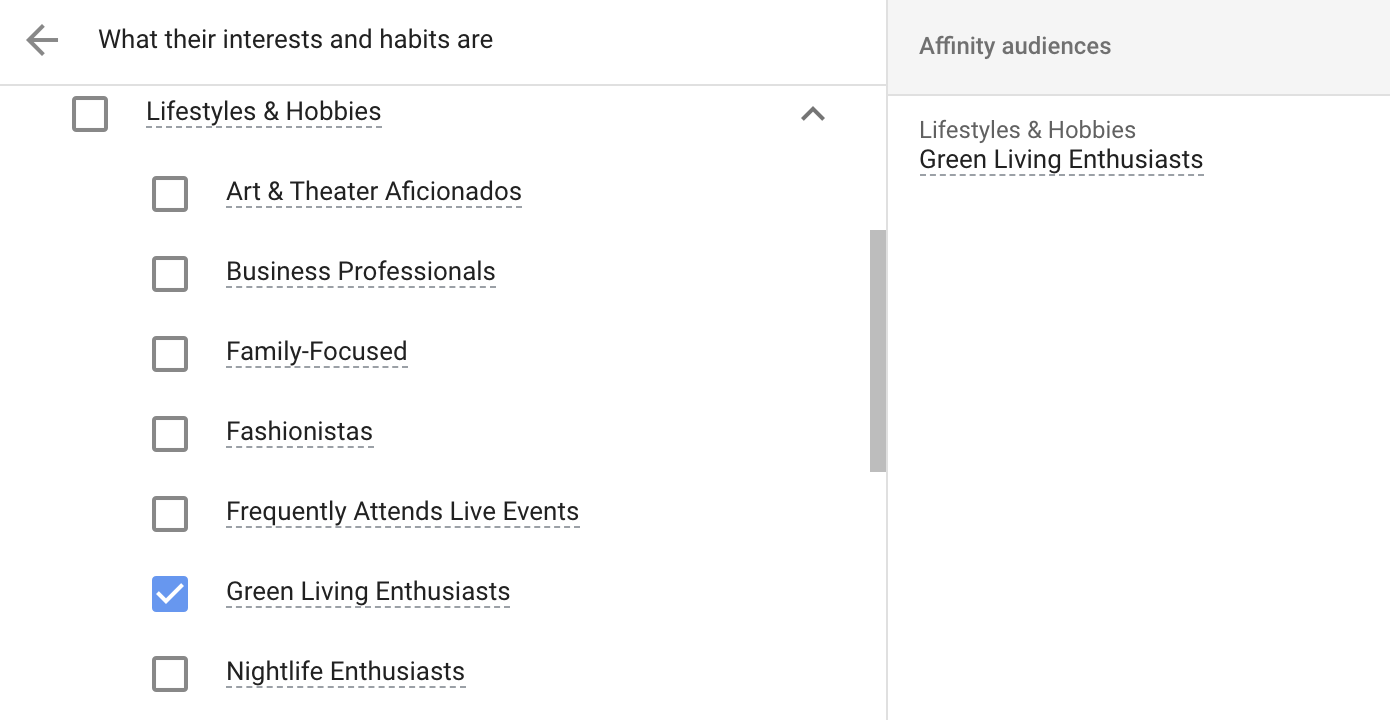Some keywords garner so many clicks, you can quickly drain your budget if you use them.
So you (or your marketing team) might resort to the tactic of only running those ads for an hour or two a day.
I understand the problem. But limiting the amount of time you run these ads isn’t the best solution.
A better approach is to move beyond keywords and get more precise in your targeting.
Fortunately, Google Ads give us lots of options when it comes to audience targeting.
So many, in fact, that the choices can become overwhelming.
Therefore, I will use this blog post to show how you can move beyond keyword-only targeting with seven different audience targeting methods.
1. Detailed Demographics
Detailed Demographics enables you to target segments of the population under four broad categories: parental status, marital status, education and homeowner status.
Each of these broad categories can be further broken down into further sub-segments, such as college students and new parents.
Let’s look at an example. Say you’re marketing diapers. You can use Detailed Demographics to target parents of infants and toddlers by targeting “parental status” and selecting “parents of infants” and “parents of toddlers”:
2. Affinity Audiences
Affinity Audiences helps you reach customers based on their interests, hobbies, habits and passions.
Again, Google provides a long list of “interests” to choose from, such as auto enthusiasts, beauty mavens, business travelers and gamers (to name a few).
Let’s look at another example. Say you sell organic, non-toxic body products. You can target “green living enthusiasts” under “lifestyles and hobbies” as they’re more likely to have an affinity for your products:
You can access Affinity Audiences in Search, Display, Video, and Shopping campaigns, as well as Gmail and Display & Video 360.
3. Remarketing
Remarketing allows you to target people who’ve visited your website or app but left without taking any action.
Remarketing is great because it’s ultra-targeted, efficient and reinforces your brand.
Remarketing comes in several “flavors,” including:
- Standard Remarketing: Ads are shown to past visitors on the Display network.
- Dynamic Remarketing: Ads include the products or services the visitors viewed on your site.
- Video Remarketing: Ads are shown to visitors who interacted with your videos or YouTube channel.
- Customer List Remarketing: Ads are shown based on contact information that you’ve uploaded (more on this below under Customer Match).
- Remarketing Lists for Search Ads: Ads are shown to visitors when they do follow-up searches.
In particular, Remarketing Lists for Search Ads (RLSA) is a solid approach. This method shows your ads at the exact time past visitors on your remarketing list are searching for your keywords.
4. Similar Audiences
Similar Audiences isn’t that different from Remarketing. But instead of targeting people who’ve visited your site and left, you’re targeting people who have exhibited similar search behavior to your existing remarketing list members.
We’ve had good luck with this type of audience targeting with clients in the education space.
Because Similar Audiences builds on information in your Remarketing lists, you need a certain level of “density” to use this targeting method.
Here’s how Google explains it:
A Similar Audiences list is created from a Remarketing list or Customer Match list with at least 1,000 cookies with enough similarity in search behavior to create a corresponding similar audience.
Similar Audiences is only available in the Search network.
5. In-Market Audiences
In-Market Audiences is aimed at finding customers who are “in the market” to buy. In other words, they’re “researching products and are actively considering buying a service or product like yours.”
Google offers a wide variety of In-Market audiences, from back-to-school shopping to Mother’s Day to eyewear to SEO services.
6. Customer Match
Customer Match is similar to Remarketing (and is sometimes considered a type of Remarketing). With Customer Match, you upload a data file of contact information to Google Ads that customers (and potential customers) have given you and then create a campaign to target that audience.
Unlike Remarketing Lists for Search Ads (RLSA) which is based on users who’ve visited your site, Customer Match audiences are created using email lists obtained firsthand by advertisers.
As with RLSAs, this targeting method has requirements for a minimum number of users.
Customer Match is currently only available on Search, Shopping, YouTube, Gmail, and Display.
7. Combined Audiences
Combined Audiences allows you to combine some of these different audience targeting methods (such as Detailed Demographics and Affinities) to create an even more tailored experience.
Here’s how Google describes it:
You can combine any audience criteria with Combined Audiences, e.g. home ownership detailed demographic, life events, remarketing lists.
This audience targeting method is relatively new, so my team and I don’t have a lot of experience with it yet. But Search Engine Journal has a good description of what makes it so powerful:
For the first time, advertisers are able to specify that their ads only show to users who are in two or more specific audiences.
In search campaigns, this targeting is then layered with campaign keywords. Users who meet the combined audience criteria and search the specified campaign keywords are the only users who will see the ads for that campaign.
As you can see, this ability to combine audiences can help you get really granular in your targeting.
Start by Observing Where You Can
Keep in mind that for many of these audience options, you can JUST observe. It’s a great way to collect data and determine how to optimize.
Keywords Are Only the Beginning
Keywords are still important to campaigns, of course. But they’re by no means the only way of making sure you and your marketing team are reaching to the right prospective customers.
When your selected keywords are generating too many clicks, consider adding some of these audience targeting methods to your Google Ads campaigns.



